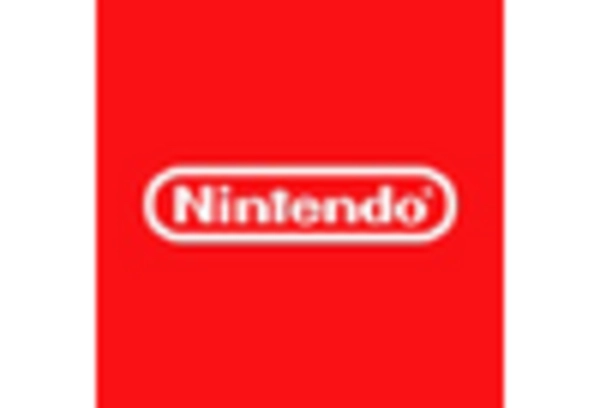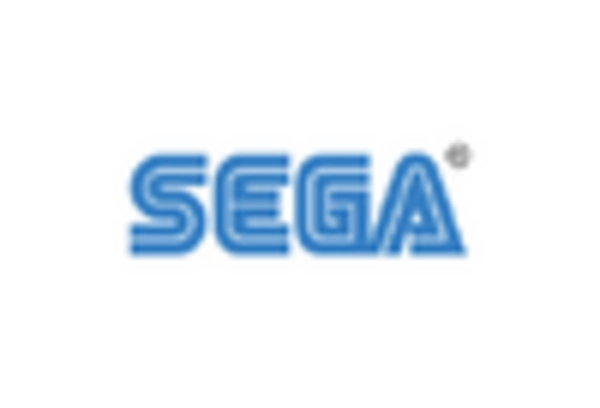The gaming console market is currently characterized by intense competition and rapid innovation, driven by evolving consumer preferences and technological advancements. Key players such as Sony (Japan), Microsoft (US), and Nintendo (Japan) are at the forefront, each adopting distinct strategies to enhance their market presence. Sony (Japan) focuses on leveraging its strong brand loyalty and exclusive game titles, while Microsoft (US) emphasizes its subscription services and cloud gaming capabilities. Nintendo (Japan), on the other hand, continues to innovate with unique gaming experiences that appeal to a broad demographic, particularly families and casual gamers. Collectively, these strategies contribute to a dynamic competitive environment, where differentiation is increasingly based on content and user experience rather than just hardware specifications.
In terms of business tactics, companies are increasingly localizing manufacturing and optimizing supply chains to enhance efficiency and reduce costs. The market structure appears moderately fragmented, with several players vying for market share, yet dominated by a few major companies that hold significant influence. This competitive landscape is shaped by the strategic actions of these key players, who are continuously adapting to market demands and technological shifts.
In October 2025, Microsoft (US) announced a partnership with a leading cloud service provider to enhance its gaming infrastructure, aiming to improve streaming quality and reduce latency for its Xbox Game Pass users. This strategic move is likely to bolster Microsoft’s competitive edge in the cloud gaming segment, aligning with the growing consumer demand for seamless gaming experiences. By investing in cloud technology, Microsoft positions itself as a leader in the digital transformation of gaming, potentially attracting a larger user base.
In September 2025, Sony (Japan) unveiled a new line of virtual reality accessories designed to enhance the gaming experience on its PlayStation platform. This initiative not only reflects Sony's commitment to innovation but also aims to capitalize on the increasing interest in immersive gaming experiences. By expanding its product offerings, Sony seeks to strengthen its ecosystem and retain its loyal customer base, which is crucial in a market where consumer preferences are rapidly evolving.
In August 2025, Nintendo (Japan) launched a new subscription service that offers exclusive access to classic games and new titles, further diversifying its revenue streams. This strategic action is indicative of Nintendo's focus on enhancing customer engagement and loyalty, particularly among nostalgic gamers. By providing unique content, Nintendo aims to differentiate itself in a crowded market, reinforcing its brand identity as a family-friendly gaming company.
As of November 2025, current trends in the gaming console market include a strong emphasis on digitalization, sustainability, and the integration of artificial intelligence. Strategic alliances are increasingly shaping the competitive landscape, as companies collaborate to enhance technological capabilities and expand their market reach. Looking ahead, competitive differentiation is likely to evolve, with a shift from price-based competition to a focus on innovation, advanced technology, and reliable supply chains. This transition suggests that companies will need to invest in R&D and strategic partnerships to maintain their competitive advantage in an ever-changing market.

















Leave a Comment